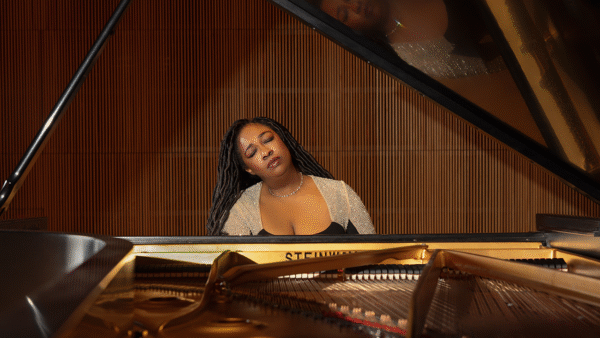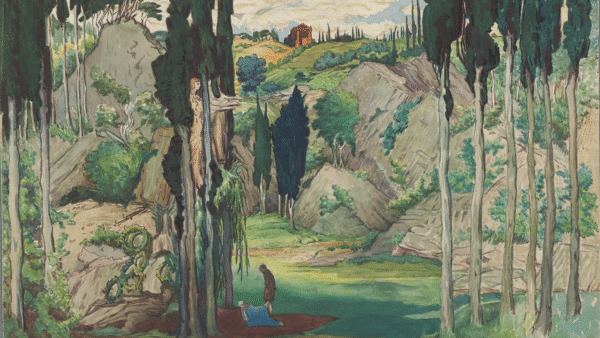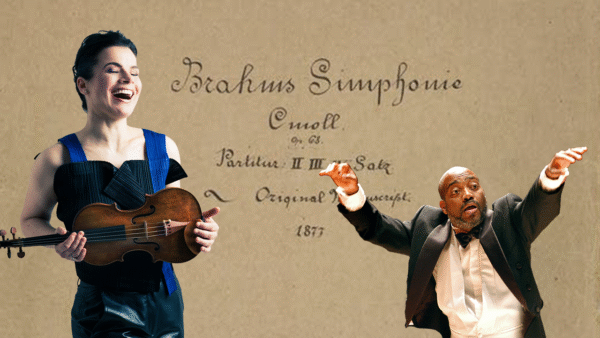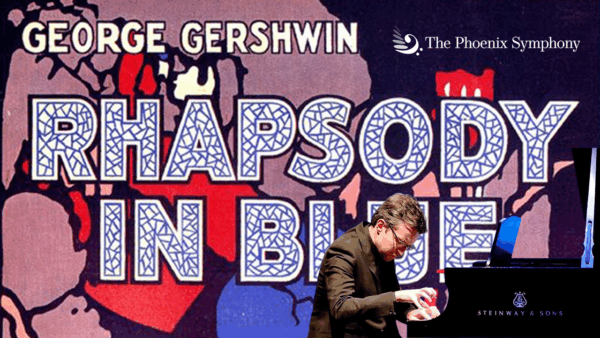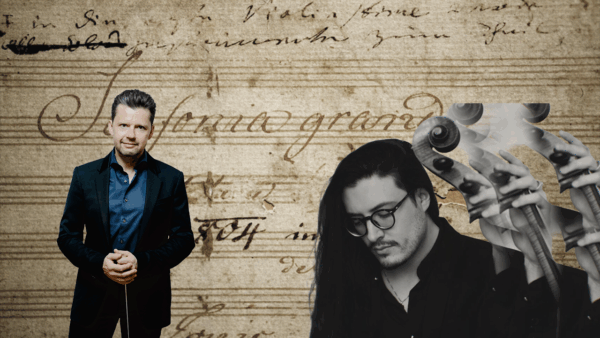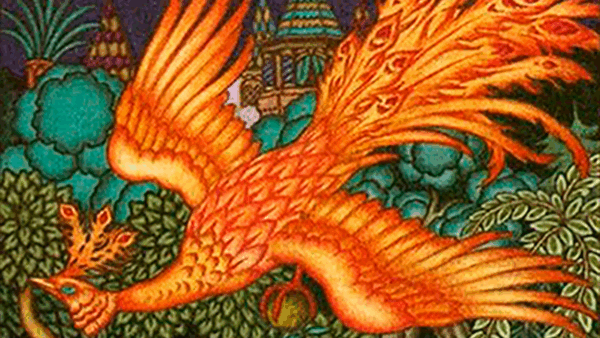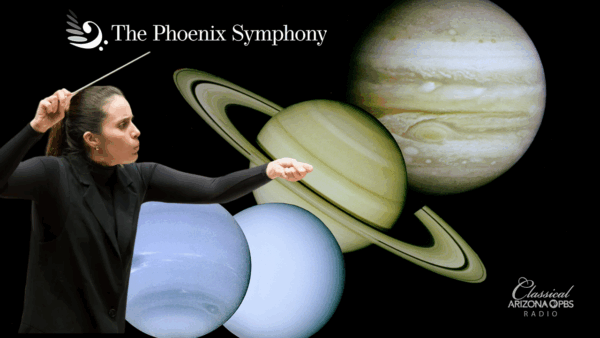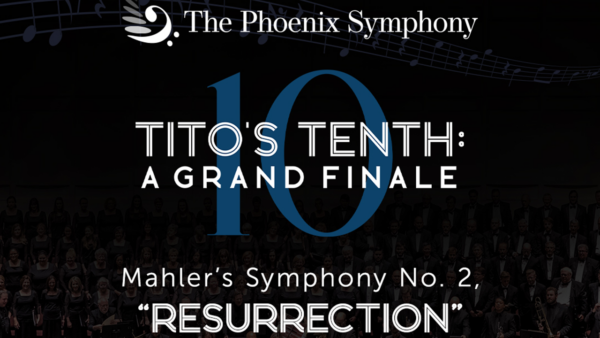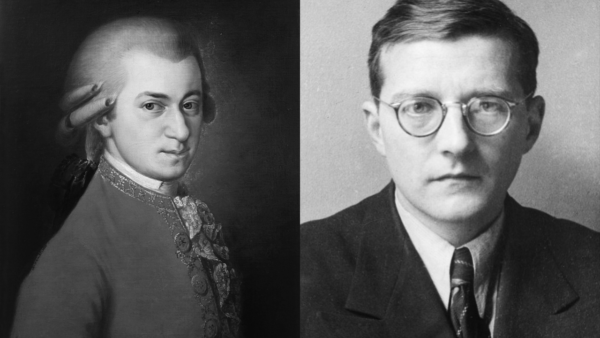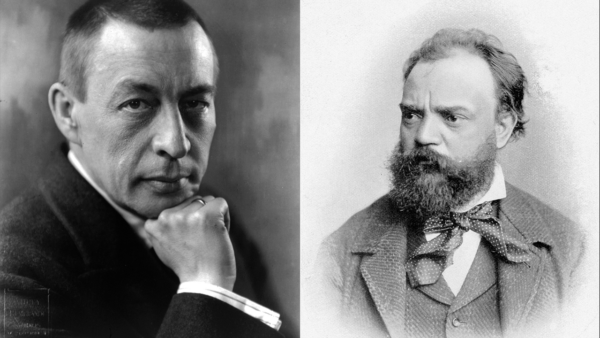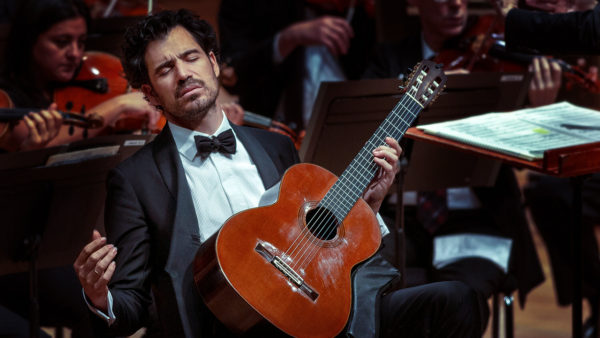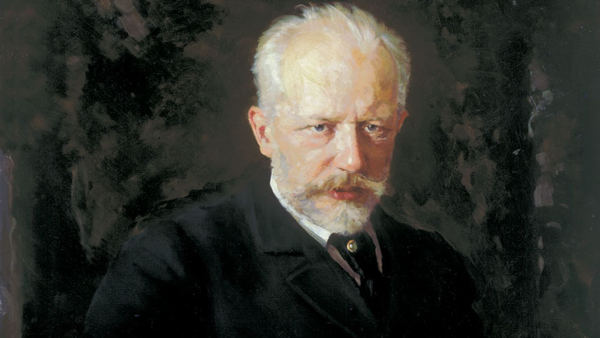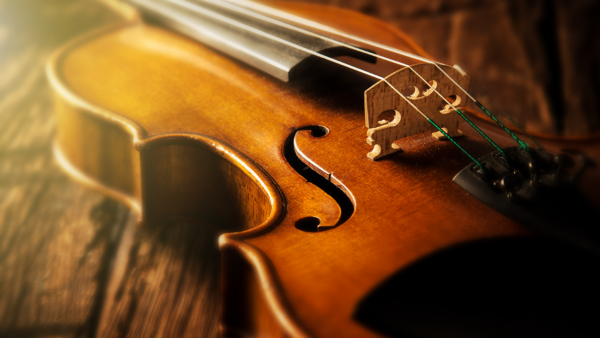Passion and Power
Nov. 20, 2023
So many connect to classical music for the way it stirs emotions, pins you to the back of your seat with explosive climaxes, and everything in between. On the next program by The Phoenix Symphony with Classical Arizona PBS, Monday night at 7:00 p.m., we’ll celebrate those qualities. The theme is Passion and Power! Highlighting the program is Richard Strauss’ Don Juan, Robert Schumann’s Piano Concerto in A minor, and Ludwig van Beethoven’s Symphony No. 7 in A major. Former Resident Conductor Matthew Kasper is on the podium for this concert. He’ll also lead our guest soloist, pianist Llewellyn Sánchez-Werner, in the Schumann. You can hear this program in full fidelity Dolby Digital surround on DTV 8.5 Classical Arizona PBS.
Strauss
The program launches with the very passionate tone poem by Richard Strauss, Don Juan (1888). The work was so successful it would give Strauss his first international acclaim. This was Strauss’ second tone poem, the first being Aus Italien (1886). Death and Transfiguration (1889), Till Eulenspeigel’s Merry Pranks (1895), and Thus Spake Zarathustra (1896) being some of his other tone poems of note. By nature, tone poems are programmatic in nature, or tell a story, and are frequently based on literature.
Strauss was inspired by an unfinished 1844 play, Don Juans Ende (Don Juan’s End) by the Austrian poet Nikolaus Lenau (1802-1850). The composer charts the rake’s conquests to his final downfall with the fatal thrust of a sword. The 24-year-old Strauss was very much taken with Richard Wagner’s compositions and that influence can be heard in the large-scale, virtuosic work that is sprinkled with leitmotivs. The score is so difficult that after a rehearsal for the premiere, one of the horn players famously cried out, “Dear God! What sin have we committed, for You to send us this rod for our backs!”
The opening is cinematic with a swashbuckling feel as Strauss gives us an exhilarating opening. The work quickly settles into E major, the key characterized for shouts of joy yet incomplete pleasure. And for a hero or antihero like Don Juan, who was always in search of the “ideal” woman, a key signature of incomplete pleasure is perhaps the perfect choice for the work’s musical foundation.
In an 1890 review of the work, critic Eduard Hanslick wrote, “The younger generation has developed a virtuosity in the creation of sound effects beyond which it is hardly possible to go. Color is everything, musical thought nothing… These outwardly brilliant compositions are nothing if not successful. I have seen Wagner disciples exalting the Strauss Don Juan with such enthusiasm that it seemed as though shivers of delight were running up and down their spines. The tragedy is that so many of our younger composers think in foreign languages—philosophy, poetry, painting—and then translate their thoughts into the mother tongue, music…”
Musicologists Bryan Gilliam and Charles Youmans applauded the work’s “dazzling orchestration, sharply etched themes, novel structure and taut pacing” and its “flagrantly pictorial, humorous and altogether irreverent” music.
Irreverent or not, the work is certainly filled with passion. In conversation with Classical Arizona PBS, the concert’s conductor Matthew Kasper had this to say about this tone poem: “I think the piece is really about love. When Strauss wrote it, he had just met a woman who was to become his wife for his entire life. His father sort of thought he was philandering around and in fact, he had met someone and fallen in love. And so that is what sort of the impetus to write Don Juan.”
Schumann
The second work on the concert is Robert Schumann’s Piano Concerto in A minor. California-born pianist Llewellyn Sánchez-Werner, shared that the work is “a piece of just tremendous poetry and intimacy and vibrance.” It took Schumann a bit to find those qualities in a piano concerto. Before this work, he had begun work on four different piano concerti, but discarded those efforts.
In 1839 he wrote to his future-wife Clara that, “Concerning concertos, I’ve already said to you that I can’t write a concerto for virtuosi and have to think of something else.” Despite extraordinary concerti by Mozart, Beethoven, and others, by the 1830s, the form had developed into a vehicle designed to highlight the virtuosity and showmanship of the pianist. In 1839 Schumann challenged the form, writing in an essay that, “[The] separation of the piano from the orchestra is something we have seen coming for some time. . . . [W]e must await the genius who will show us in a newer and more brilliant way how orchestra and piano may be combined, how the soloist, dominant at the keyboard, may unfold the wealth of his instrument and his art, while the orchestra, no longer a mere spectator, may interweave its manifold facets into the scene.”
Schumann would indeed be that genius giving the concerto new weight and depth. Yet, he would only complete one concerto for piano, one for cello, and one for violin. And as soloist Sánchez-Werner says, “I think that every pianist needs to have [the Schumann Piano Concerto] in their repertoire. There are so many great piano concerti that we are fortunate to be able to perform, but there’s a reason that this is one of the standards.”
Beethoven
The concerto’s passion and power make it a favorite with artists and audiences alike, just as Beethoven’s Symphony No. 7 in A major is. Love, too, is a theme of the work. The symphony was written around the same time as his passionate 10-page unsent love letter to his unnamed “Immortal Beloved.” Conductor Matthew Kasper noted, “If you read those letters that he wrote, it’s about being in a carriage and the bumpy ride on the roads to go see her. And then love and eventual of loss of whatever happened there. So much of Beethoven Seven, I think, just goes back and forth between this tremendous excitement, this tremendous disappointment, and this tremendous heartache,… with this ending, which is absolutely exciting.”
Of that exciting ending classical writer Geoff Kuenning wrote, “the final movement zips along at an irrepressible pace that threatens to sweep the entire orchestra off its feet and around the theater…”
We hope that when you tune in to the next concert by The Phoenix Symphony, you will get swept off your feet by the passion and power of this glorious music. This concert, the ninth of ten concerts in this series was recorded in Phoenix Symphony Hall on April 29, 2023. You can listen on Classical 89.5 KBACH, KNAU Arizona Public Radio, and DTV 8.5, Classical Arizona PBS.
Featured in this episode:
Schumann - Concerto in A minor, for Piano & Orchestra, Op. 54 - The Phoenix Symphony; Matthew Kasper, conductor; Llewellyn Sanchez-Werner, piano
I. Allegro affettuoso
II. Intermezzo: Andantino grazioso
II. Allegro vivace
Beethoven - Symphony No. 7 in A major, Op. 92 - The Phoenix Symphony; Matthew Kasper, conductor
I. Poco sostenuto - Vivace
II. Allegretto
III. Presto
IV. Allegro con brio
Dvorak - Symphony in E Minor, Op. 95, No. 9 - "From the New World" - The Phoenix Symphony; Tito Munoz, conductor
II. Largo







